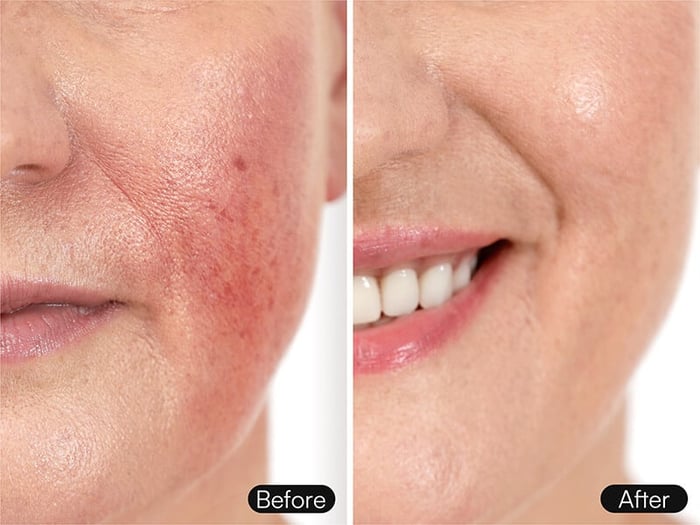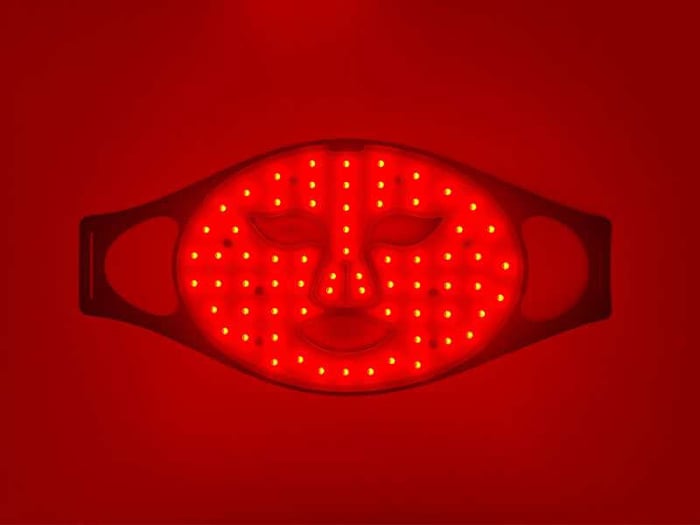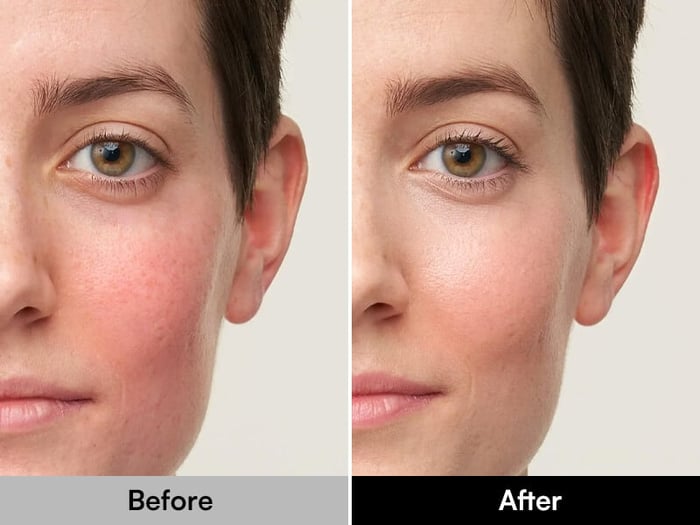Have you ever caught yourself frowning at those stubborn dark spots in the mirror? You're not alone. Facial discoloration is one of the most common skin concerns that can make us feel self-conscious, whether it's sun damage, pregnancy marks, or those lingering spots from old breakouts. The good news? You don't have to just live with it. From daily skincare tweaks to professional treatments, this guide will walk you through all your options to help you achieve the even, glowing complexion you're looking for.
What Is Facial Discoloration and What Causes It?
Facial discoloration is a skin condition where patches of skin become darker or different in color from your natural skin tone. It affects people of all skin types and ages, though some individuals are more susceptible than others. Understanding the type of discoloration you have is the first step toward effective treatment.
Common causes of facial discoloration include:
1. Sun exposure, which triggers excess melanin production leading to dark spots and patches
2. Hormonal changes during pregnancy, menopause, or from birth control use
3. Post-inflammatory hyperpigmentation following acne, eczema, or skin injuries
4. Certain medications that make skin more sensitive to sunlight
5. Genetic factors, particularly in people with darker skin tones
6. Aging, which can lead to uneven melanin distribution
7. Vitamin deficiencies, especially in vitamin B12 and folic acid
These discoloration issues typically appear on the most sun-exposed areas of your face - the cheeks, forehead, upper lip, and bridge of the nose. Because different types of discoloration respond to different treatments, getting a proper diagnosis from a dermatologist is crucial before starting any treatment plan. 
What Should You Change in Your Daily Skincare Routine?
A targeted skincare routine can significantly help manage and improve facial discoloration. The foundation of any effective routine starts with consistent sun protection, as UV exposure can worsen existing discoloration and trigger new spots. Use a broad-spectrum sunscreen with at least SPF 30 daily, and reapply every two hours when outdoors.
Key ingredients proven to help with discoloration include:
● Vitamin C: This antioxidant helps brighten skin and prevent melanin overproduction
● Niacinamide: Works to reduce pigmentation and strengthen the skin barrier
● Alpha Arbutin: Effectively blocks melanin production and lightens existing dark spots
For your morning routine:
● Gentle cleanser
● Exfoliating serum
● Vitamin C serum
● Moisturizer
● Dark spot cream
● Sunscreen
For your evening routine:
● Double cleanse to remove sunscreen
● Niacinamide or alpha arbutin serum
● Rich moisturizer
● Retinol cream
Avoid these products as they can worsen discoloration:
● Harsh physical scrubs that irritate the skin
● Alcohol-based products that cause dryness
● Fragranced skincare that may trigger inflammation
● Products containing citrus oils which can increase sun sensitivity
● Any skincare that causes irritation or redness
When introducing new products, add them one at a time and wait two weeks before adding another to monitor how your skin responds.
What Are the Most Effective Topical Treatments for Skin Discoloration?
Topical treatments play a vital role in addressing facial discoloration, with both prescription and over-the-counter options available. Each treatment works differently to reduce pigmentation and prevent new discoloration from forming.
Prescription treatments include:
● Hydroquinone (2-4%): The most potent skin-lightening ingredient that blocks melanin production. Use only under medical supervision for 3-4 months at a time
● Tretinoin: A vitamin A derivative that increases cell turnover and helps fade dark spots. Results typically show in 8-12 weeks
● Azelaic acid (15-20%): Reduces pigmentation while being gentle enough for sensitive skin, showing improvement in 4-8 weeks
Over-the-counter alternatives offer milder but effective options:
● Tranexamic acid
● Glycolic acid
● Lactic acid
● Licorice extract
How to Apply Skin Treatments:
● Apply treatments to clean, dry skin
● Start with once every other night to assess skin tolerance
● Use a pea-sized amount for the entire face
● Always follow with moisturizer
● Use sunscreen during the day
When to Expect Results:
● Minor improvement: 4-6 weeks
● Significant results: 8-12 weeks
● Maximum benefits: 3-6 months
Consistency is key for all topical treatments. If no improvement is seen after 3 months of consistent use, consult a dermatologist to adjust your treatment plan.
How Red Light Therapy Tackles Skin Discoloration
Red light therapy uses specific wavelengths of LED light to penetrate the skin and target pigmentation issues. When the light reaches skin cells, it stimulates cellular repair and reduces inflammation which can lead to discoloration. This treatment is non-invasive and can complement other skin-brightening treatments.
What Are the Benefits of Red Light Therapy for Pigmentation?
● Calms the redness related to dark spots.
● Works towards an even-toned complexion.
● Helps stop new spots from forming.
● Keeps skin looking healthy and fresh.
How to Use Red Light Therapy:
1. Aim for 3 to 5 times a week.
2. Each time, spend 10 to 20 minutes with the light.
3. Make sure your face is clean before you start.
4. Stick with it for 8 to 12 weeks to really see the difference.
Choosing Your Device: Professional vs. At-home Devices
Feature | Professional Treatments | At-home Devices |
Power | High | Moderate |
Settings | Precise and controlled | Flexible and customizable |
Supervision | Done by experts | DIY |
Cost | More expensive per visit | Lower upfront cost |
Convenience | Scheduled appointments | Use anytime at home |
Time for Visible Results | Often faster with advanced techniques | Usually takes longer but offers flexibility, privacy, and builds benefits over time. |
If you're dealing with uneven skin tone or dark spots, red light therapy masks might just be the handy tool you need. They use red light to go beneath the skin's surface, which may encourage healing and could help even out your skin tone. These masks aim to boost collagen production too, which is great for smoothing things out.
You can choose between professional-grade masks or more affordable at-home red light therapy masks. Either way, they offer a non-invasive method to work on those dark spots and give your skin a healthier appearance.
How to Stay Safe Using Red Light Therapy
1. Wear special glasses to protect your eyes during the treatment.
2. Follow the instructions so you don't use it for too long.
3. If you're using medicine that makes your skin sensitive to light, skip this treatment.
4. If your skin starts to feel irritated, it's best to stop using it and check with a doctor.
5. Chat with your doctor before starting, just to be on the safe side.
Red light therapy could be a good step to add to your skincare routine if you want to work on those bothersome spots in a gentle way. Just do a little homework first and decide what's best for you — at home or in a clinic.
What Professional Treatments Can Dermatologists Offer for Discoloration?
Professional treatments provide more intensive solutions for stubborn facial discoloration. These procedures are performed by licensed dermatologists and skincare professionals, offering targeted approaches for various pigmentation concerns.
Chemical Peels:
Chemical Peels | Types | Effectiveness | Recovery Time |
Superficial Peels | Glycolic, Lactic Acid | Mild improvement, good for maintenance | 3-5 days |
Medium Peels | TCA | Moderate improvement in stubborn spots | 5-7 days |
Deep Peels | Phenol | Significant improvement in severe cases | 14-21 days |
Microneedling:
Microneedling | Details |
What It Does | Uses fine needles to create tiny skin channels; often used with serums for brightening. |
Session Time | 30-60 minutes |
Main Benefits | Boosts product absorption, enhances collagen production, and fades pigmentation over time. |
Post-Treatment | Expect some redness (24-48 hours) and minor swelling (1-2 days). Makeup is usually okay after 24 hours. |
Laser Therapy:
Laser Therapy | Detail |
Types | IPL (Intense Pulsed Light), Fraxel, PicoSure, Q-switched Nd:YAG |
Best Candidates | Stable pigmentation, not pregnant/breastfeeding, no active skin infections, all skin types (with right laser choice) |
Expected Results | Improvement after 1-3 sessions; optimal after 4-6 treatments; results last 1-2 years with sun protection |
How Can Lifestyle Changes Help Improve Skin Discoloration?
Making certain lifestyle adjustments can support your skin's natural healing process and complement other treatments for facial discoloration.
Dietary considerations include consuming:
● Antioxidant-rich foods like berries and leafy greens
● Vitamin C-rich fruits and vegetables
● Foods high in vitamin E and omega-3 fatty acids
● Zinc-rich foods for skin repair
Stress management is essential as stress hormones can trigger pigmentation. Regular exercise, meditation, or yoga can help maintain balanced hormone levels.
Quality sleep allows your skin to repair itself. Aim for 7-8 hours of uninterrupted sleep nightly.
Natural ingredients that may help:
● Green tea extract
● Aloe vera
● Turmeric
● Honey
● Rice water
Stay hydrated by drinking 8-10 glasses of water daily to support overall skin health and natural cell turnover.
Take Control of Your Facial Discoloration Today
Getting rid of facial discoloration takes time, but you have plenty of options to choose from:
1. You can start small with daily basics like sunscreen and gentle skincare products.
2. Once you're comfortable, try adding targeted treatments like vitamin C or niacinamide to your routine.
3. If you want faster results, professional treatments like chemical peels or red light therapy masks could be right for you.
If you've been following a consistent routine for a few months without seeing changes, it's time to check in with a dermatologist. They can look at your specific skin concerns and help you find the best treatment plan.






